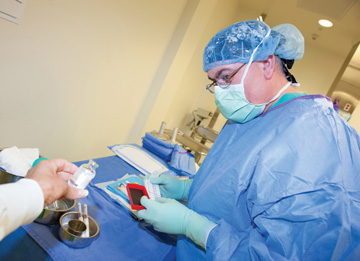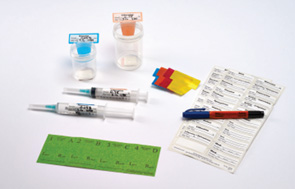Experts fear the prospect of criminal charges for medical mistakes will limit self-reporting and exacerbate an ongoing staffing crisis.
 SENTINEL EVENT The prosecution and conviction of former nurse RaDonda Vaught over a fatal medication error has had a chilling effect on the profession.
SENTINEL EVENT The prosecution and conviction of former nurse RaDonda Vaught over a fatal medication error has had a chilling effect on the profession.
With the danger of criminal prosecution hanging over their heads, how many frontline nurses — many of whom are already burnt out from the harrowing experiences of the pandemic — will risk coming forward to self-report their mistakes in a post-Vaught healthcare landscape? That's one of the big questions healthcare professionals everywhere are asking in the wake of the recent RaDonda Vaught ruling.
While working as a nurse at Vanderbilt University Medical Center (VUMC) in Nashville on Dec. 26, 2017, Ms. Vaught accidentally administered the neuromuscular blocker vecuronium instead of the prescribed sedative Versed (midazolam) to 75-year-old brain injury patient Charlene Murphey before Murphey went into an MRI machine. Ms. Murphey died a day after the medication error, and Ms. Vaught was eventually fired on Jan. 3, 2018, reportedly for not following the "five rights" of medication administration.
The Tennessee District Attorney's Office then took the unusual step of pursuing criminal charges, which led to a landmark court case and guilty verdicts of criminally negligent homicide and gross neglect of an impaired adult. On May 13, Ms. Vaught was sentenced to three years of supervised probation.
Healthcare professionals everywhere are concerned about the fallout from the verdict. One of the most vocal critics of the ruling has been the Institute for Safe Medication Practices (ISMP), a nonprofit group that provides programs, tools and guidelines designed to prevent medication errors. It believes mistakes made by healthcare workers should not be criminalized.
ISMP President Emeritus Michael Cohen, RPh, MS, FASHP, says the criminalization of medication errors could directly impact patient safety by making providers less likely to be transparent and report future mistakes. "When RaDonda Vaught was convicted, the entire healthcare community lost as well," he says. "Her conviction, which made a scapegoat of one individual instead of focusing on fixing larger, preventable systemic issues, will have serious consequences for patient safety."
Those consequences, says Mr. Cohen, could range from a lack of self-reporting, which is critical for the prevention of future errors by helping staff learn from the mistakes of others, to recruiting issues for an industry already plagued by staffing shortages. "If nurses believe that society, their community and the judicial system holds them to a standard of perfection, why would they want to work in health care?" asks Mr. Cohen.
Mr. Cohen's dire predictions are shared by Robyn Begley, DNP, RN, chief nursing officer of the American Hospital Association and CEO of the American Organization for Nursing Leadership. "We must encourage nurses and physicians to report errors so we can identify strategies to make sure they don't happen again," she says. "Criminal prosecutions for unintentional acts are the wrong approach. They discourage health caregivers from coming forward with their mistakes and will complicate efforts to retain and recruit more people into nursing and other healthcare professions that are already understaffed and strained by years of caring for patients during the pandemic."
.svg?sfvrsn=be606e78_3)



.svg?sfvrsn=56b2f850_5)